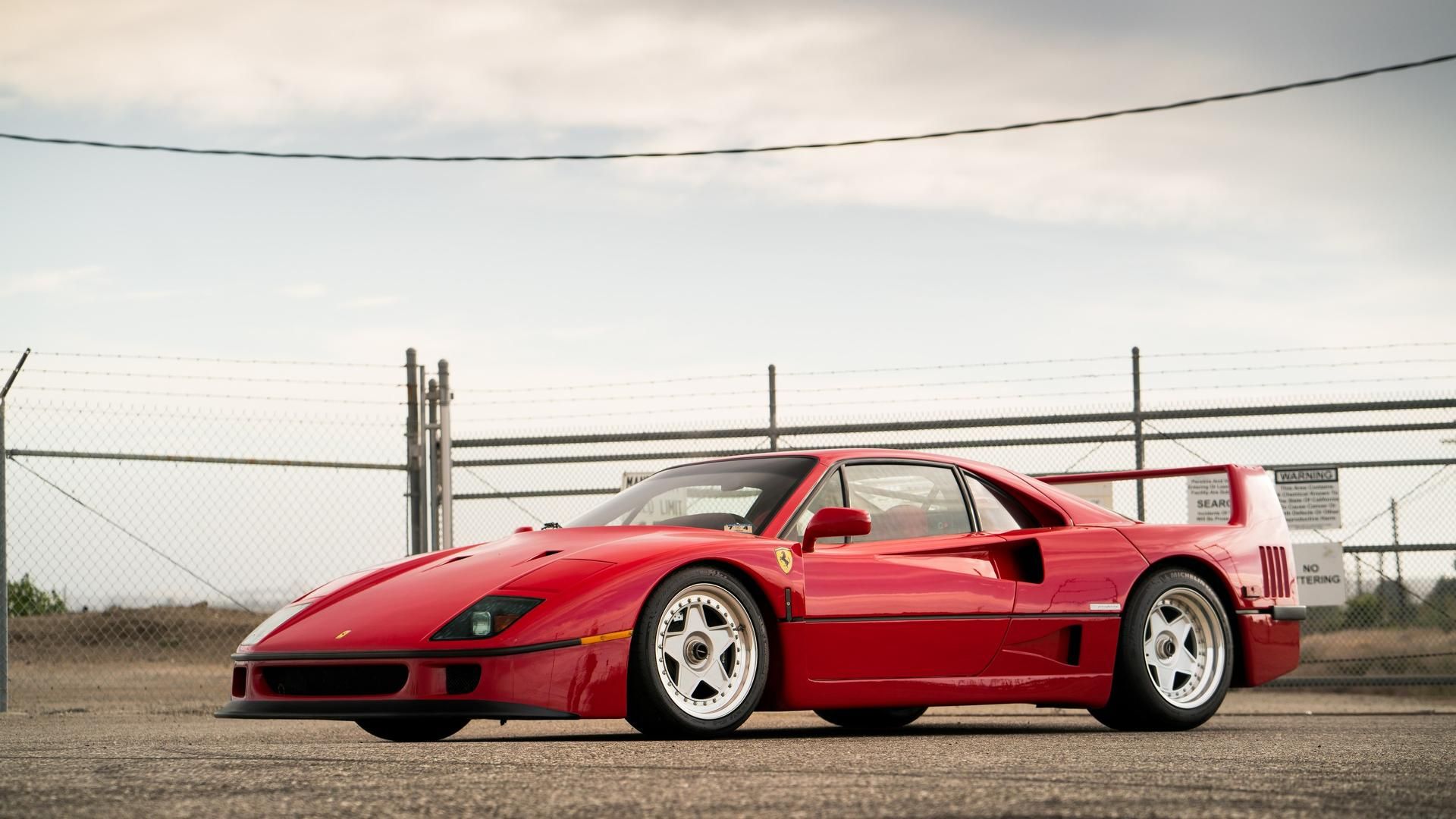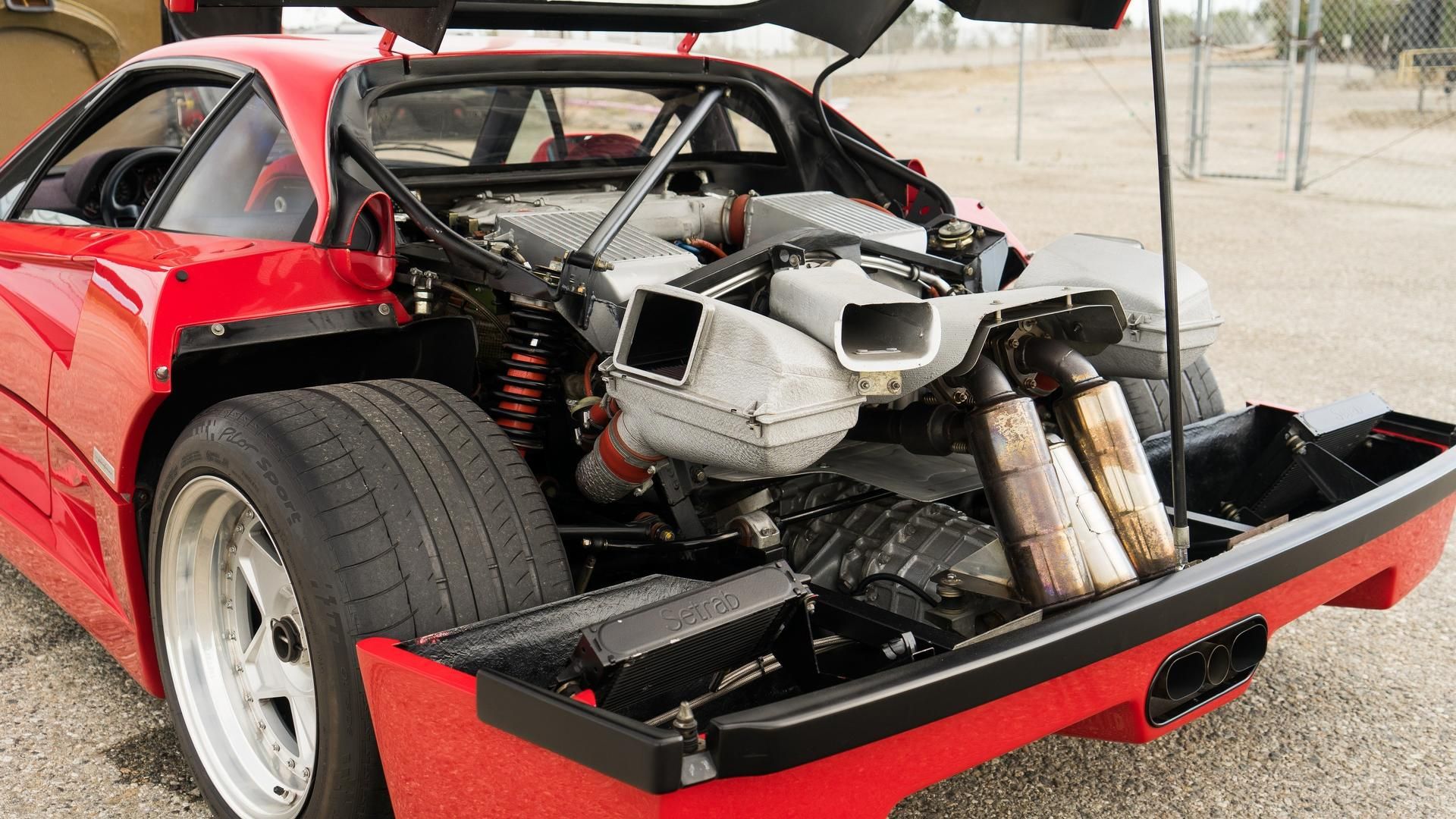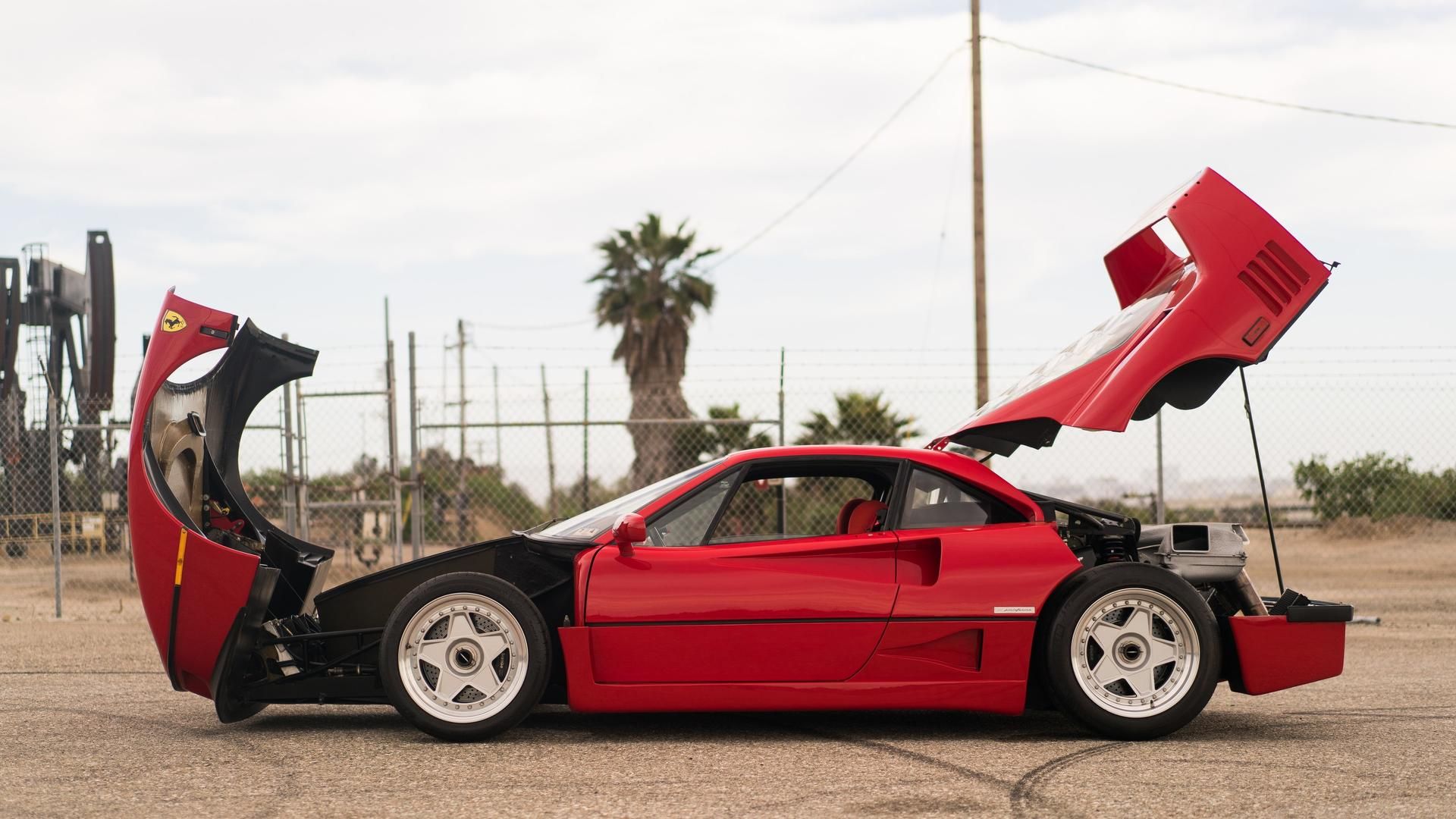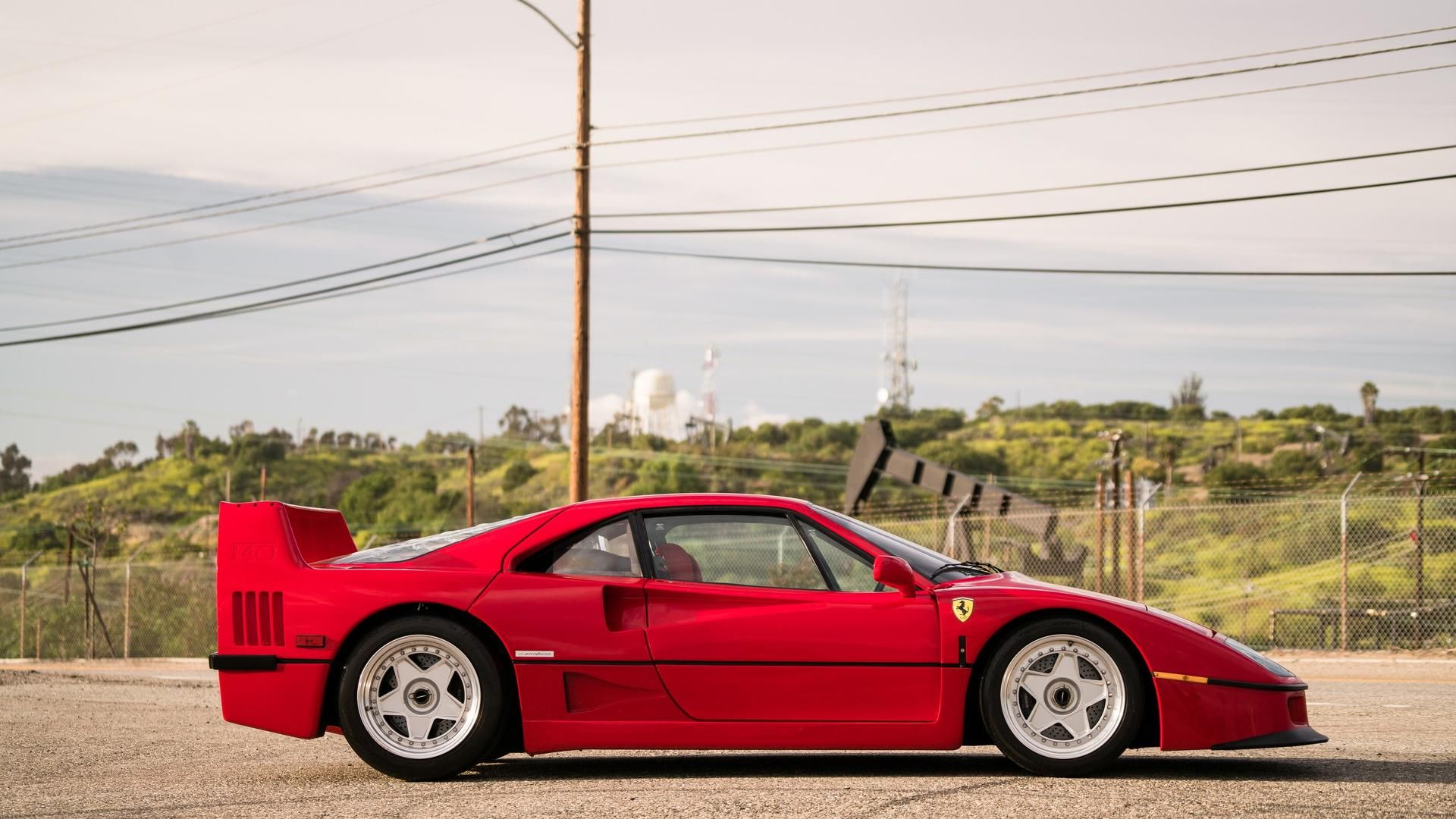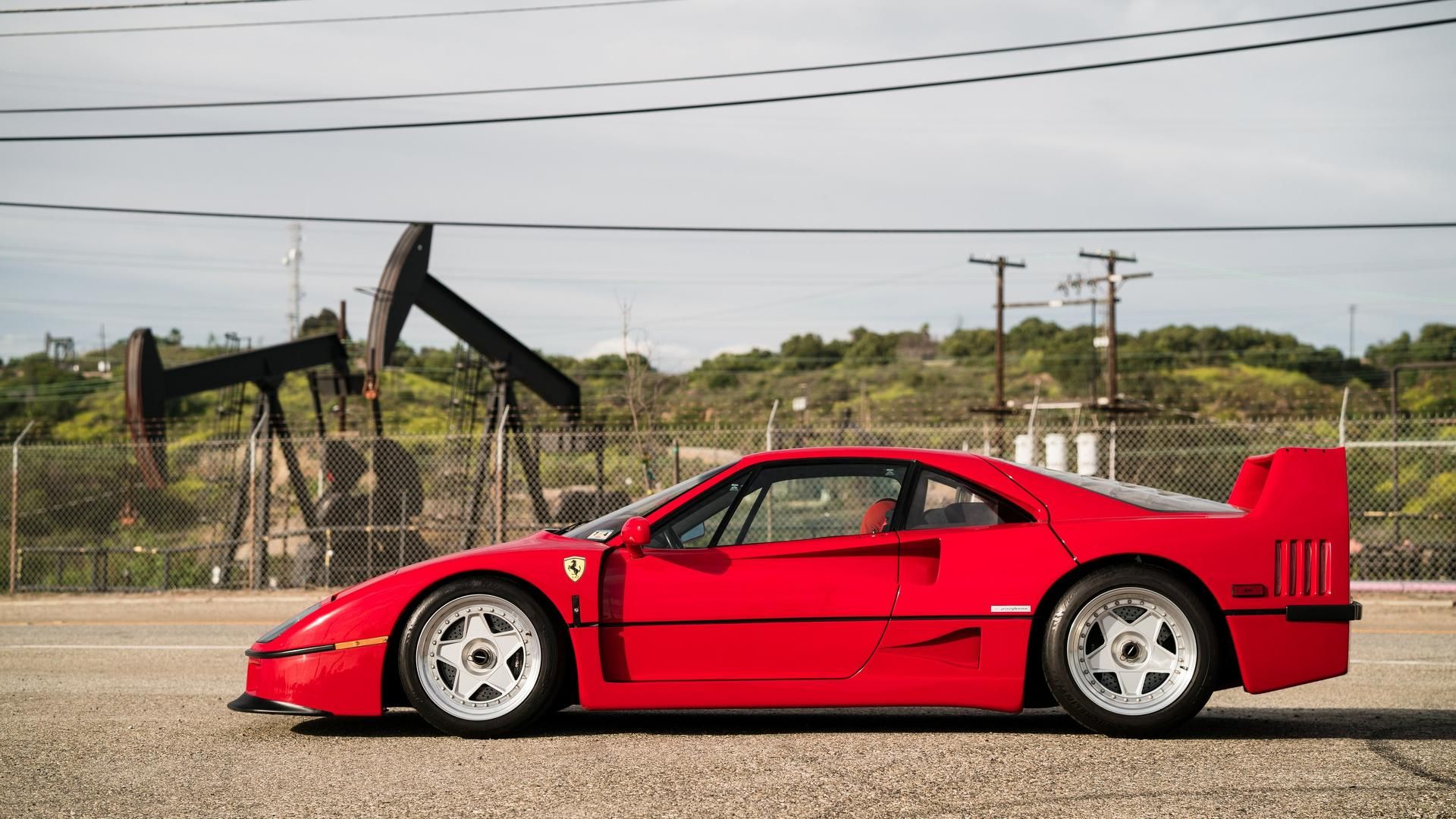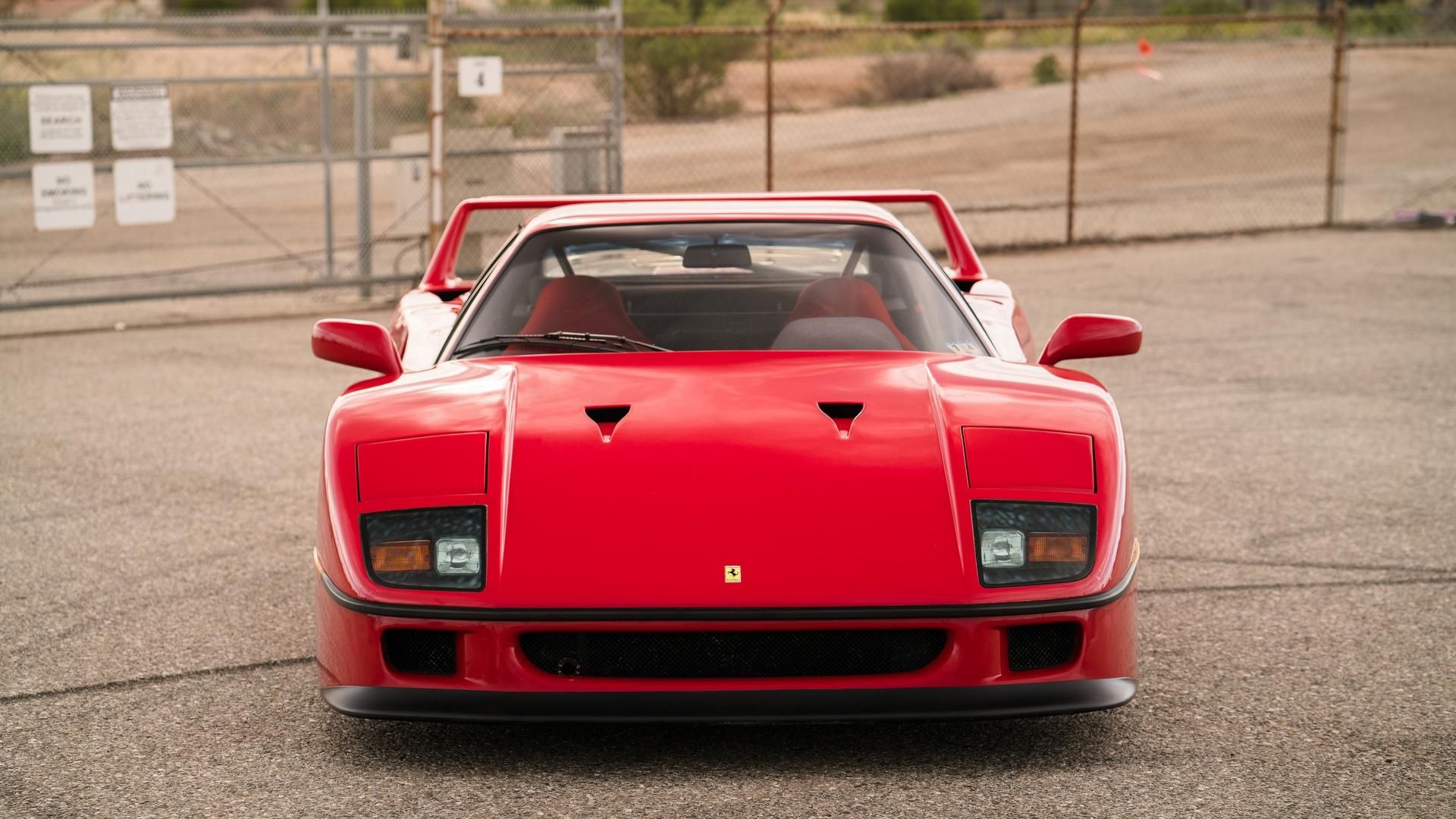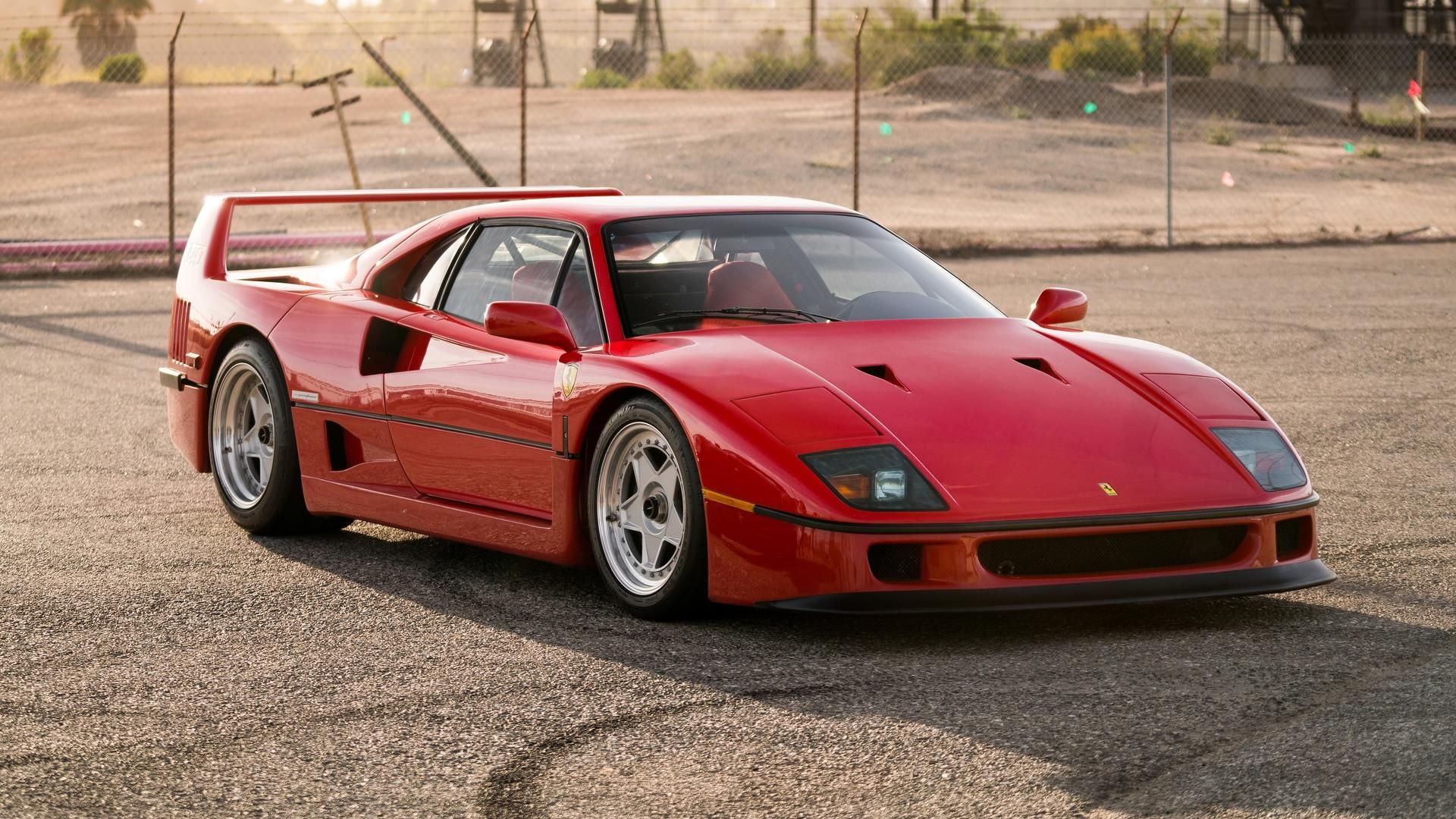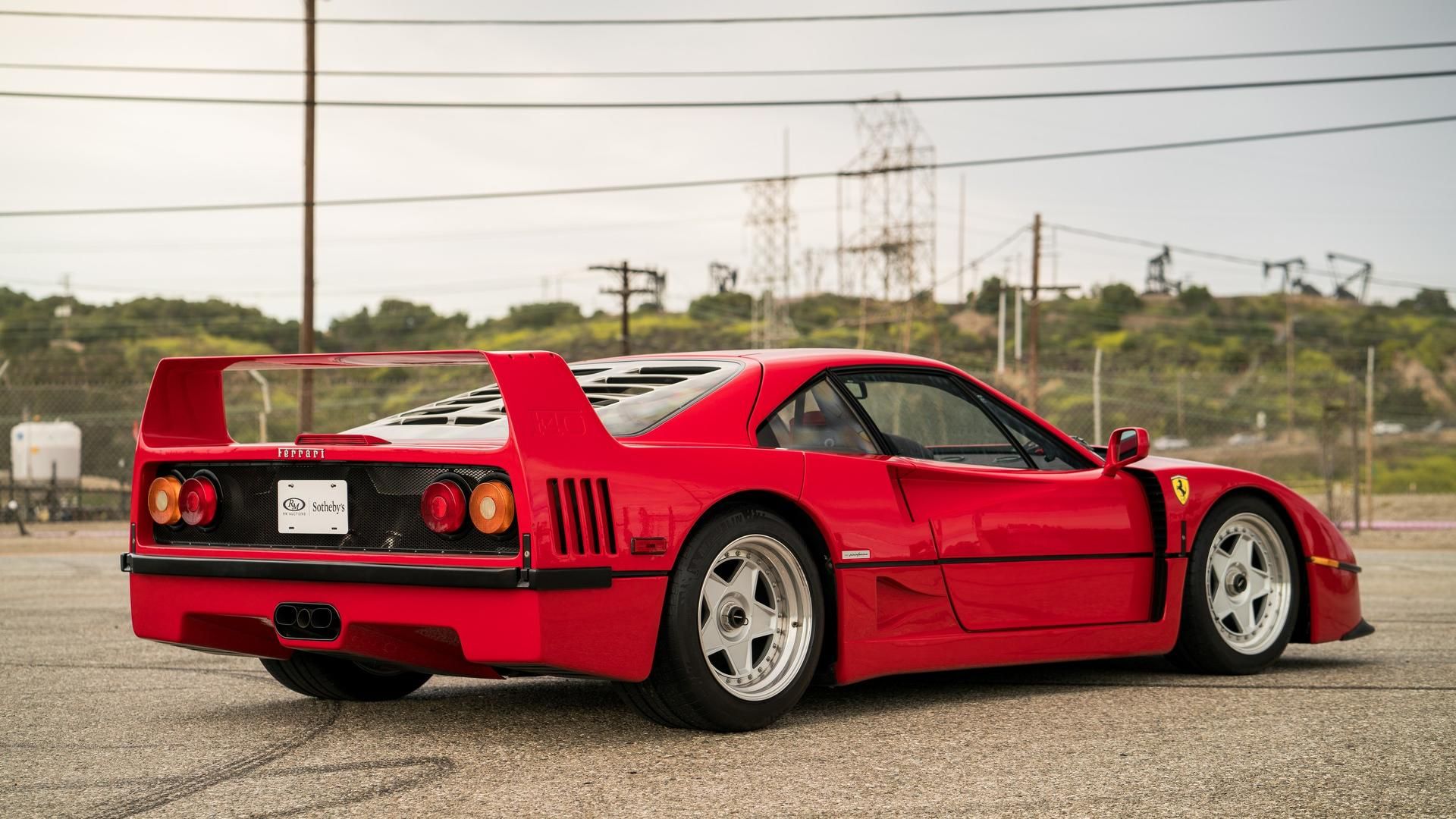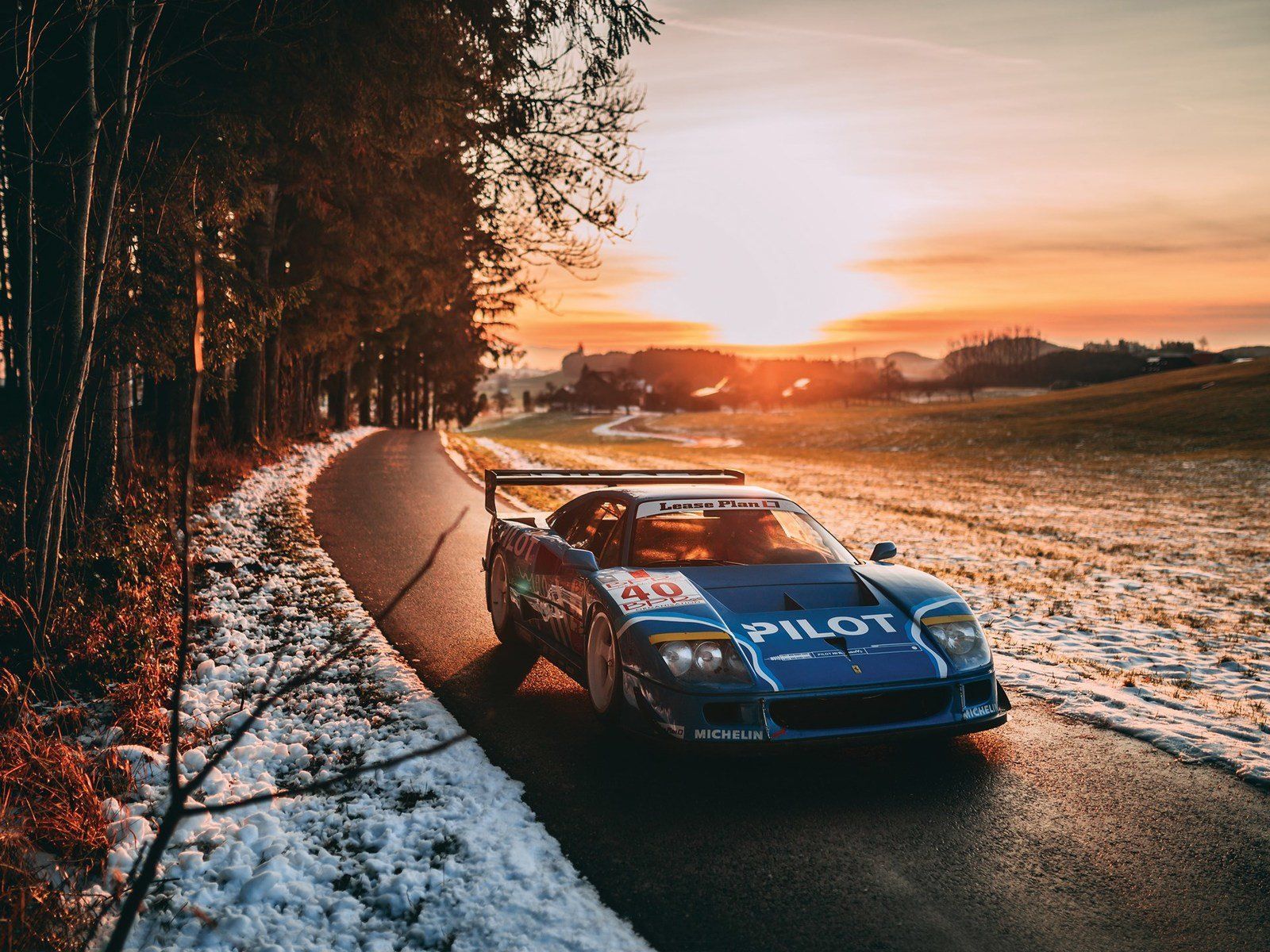If you’ve landed here, and are somewhere between your late 20s and early 40s, then there’s a good chance that you or someone you know had a Ferrari F40 poster hanging on the bedroom wall. The F40 was introduced in 1987 and celebrated Ferrari’s 40th-anniversary while, at the same time, ultimately serving as the last vehicle to be launched by Mr. Enzo Ferrari himself. So, what made the Ferrari F40 so special? Well, there's a lot more to it than you ever realized.
The Ferrari F40 Was Designed to Conquer the Porsche 959
In the late 1980s, Porsche had a real masterpiece on its hands. The 911-based Porsche 959 was the most technologically advanced vehicle for the time, being built for FIA Group B racing but homologated to street-legal standards in just a little over 200 examples. Its 2.8-liter, twin-turbo, inline-six was good for 444 horsepower and 369 pound-feet of torque – enough to classify it as a real-life supercar at the time and to make it the world’s fastest car at the time, being able to hit 197 mph. While Porsche was developing the 959, Ferrari was working on its own Group B fighter – the 288 GTO Evoluzione. There were five of them produced, as a matter of fact. But, just like Porsche, Ferrari never got to race in Group B because FIA shut it down before either got the chance. With a brutal street-legal track car in Porsche’s stable, Ferrari couldn’t sit on the sidelines. Enzo Ferrari told his engineers to “build a car to be the best in the world,” a statement that put Porsche and the 959 in the crosshairs, and those five obsolete 288 GTO Evoluzione prototypes became the basis for the Ferrari F40.
The Ferrari F40 Was Powered By A Modified Version of the 288 GTO’s Engine
Ferrari may have started out with the 288 GTO’s 2.85-liter, twin-turbo V-8, but that’s now how things ended up by the time production started. Where the 288 GTO’s V-8 delivered 394 horsepower at 7,000 rpm and 366 pound-feet of torque at 3,800 rpm, Ferrari was able to boost that all the way up to 471 horsepower and 426 pound-feet of torque. The engine’s displacement never changed (the F-40 was technically designated a 2.9-liter), but other tweaks to the fuel-injection system, turbochargers, and valved train netted a hefty increase of 77 horsepower and 60 pound-feet of torque. This power output allowed the F-40 to hist 60 mph in just 4.2 seconds 0.6-seconds faster than the 288 GTO. Of course, this was still slow compared to the Porsche 959, which made the same sprint in just 3.6 seconds.
Demand for the F40 Forced Ferrari to Second Think It’s Production Cap
When the Ferrari F40 made its glorious debut, Ferrari pledged to build just 400 examples, each of which would command a starting price of $400,000 – about five times what you would have paid for a 288 GTO at the time. To put this into perspective, if you adjust for inflation, the Ferrari would have cost you around $900,000 in today’s money. That said, Ferrari massively underestimated the desire of its client base as customer interest far exceeded the original production cap of 400. When Ferrari reached that cap, it just continued building cars. When all was said and done Ferrari built a total of 1,315 F40s, only 213 of which landed in the United States.
Ferrari F40 specifications
|
Engine |
2.85-liter, twin-turbo V-8 |
|---|---|
|
Horsepower |
471 HP |
|
Torque |
426 LB-FT |
|
0 to 60 mph |
4.2 seconds |
|
Top Speed |
201 mph |
Demand Is Still High Today, But The Prices Have Skyrocketed
Much like an rolling piece of art, the Ferrari F40’s value has only increased over the years. Way back in 1990, for example, Formula 1 champion, Nigel Mansell, bought one for a cool £1 million, which converted to around $1,7 million at exchanges rates back then. That set a new record that held strong for more than three decades when it was finally beat out in the 2010s. Nowadays, you can find them for around $1.4 and $1.7 million, with auction houses like RM Sotheby’s, Barrett-Jackson, and Mecum selling plenty over the last 5 or 6 years.
F40s With Thin Paint Are Rare and Worth Considerably More (and Are Also the Oldest)
The Ferrari F40 was a no nonsense machine designed with a minimalistic approach that can be seen inside and out. This is especially true for early models, which feature paint that’s so thin that you can actually see the Kevlar weave of the body panels through the paint. Why in the world would a $400,000 car have paint so thin? To save weight. In fact, Ferrari was so anal about reducing weight that it used less than two liters of red paint on each production model. As a frame of reference, a nice finish on a Ford Mustang takes about 3.5 liters when everything is said and done. Many customers didn’t like how thin the F40’s paint was, so a large portion of F40s were refinished with a thicker coat of paint, making the few that remain with original pain that much more valuable.
Ferrari’s Desire To Keep The F40 Light Was Felt By The Driver, Literally
As Ferrari transformed its Group B racing prototypes for road use, the decision was made to keep them as track-worthy as possible. So, keeping the weight low was of paramount importance, and the lengths that Ferrari engineers went to is proof of this. In fact, the F40 had zero driver aids – not event power-assisted brakes, ABS, or power steering. Carpet, sculpted door trim, and even door handles were left in the parts bin too. But that’s not all. The Ferrari F40 didn’t even come with air conditioning. Yes, a $400,000 car without air conditioning. It sounds crazy, right? Well, it’s true. However, later models that did hit the U.S. market were fitted with air conditioning because the F40’s cabin got extremely hot from the engine.
The Ferrari F40 Was Impressively Light
All the work to keep the F40 light, like going with extra thin exterior paint cutting pretty much any convenience feature you can think of, actually paid off. When all was said and done, the F40 tips the scales at just 2,433 pounds, making it nearly 800 pounds lighter than its nearest competitor, the Porsche 959, which had a curb weight of 3,214 pounds.
The Ferrari F40 Didn’t Exactly Feel Like An Exotic Car On the Road
If you pay six figures for a car, it should drive like a dream, right? Well, one would think, but that wasn’t the case with the F40 at all. In fact, all the effort that went into making the F40 light also, to a certain extent, made it drive like crap. The steel tube chassis was beyond being dated technology, and you could apparently feel the entire car flexing when you push it to its limit. You don’t have to take our word for it, though. Gordon Murray, the father of the McLaren F1 told Motor Trend (in the 07/1990 edition) that the door panels even rattled once you got the chassis to start flexing:
Car and Driver had a similar experience, calling the F40 a “wrecking ball” and saying that “the F40 has made our knees tremble involuntarily, our hearts do little stutter steps, and it made our palms disgustingly wet.” Of course, none of this stopped the from being the poster car of the 80s and 90s for every car-loving child and teen on the planet (well, probably).
The Ferrari F40 – You Want Basic, We’ll Give You Basic
By now you know that the F40 was pretty heavily criticized in some regard. The interior rattled like a 20-year-old GM product, the chassis flexed during hard maneuvers, and it was even considered a nightmare to drive in some circumstances – all while still being considered one of the greatest cars ever made. See, Ferrari didn’t care about all the criticism coming in and, in fact, had expected it because the F40 wasn’t built for everyone. A Ferrari marking executive was quotes as saying “customers had been saying our cars were becoming too plush and comfortable. The F40 is for the most enthusiastic of our owners who want nothing but sheer performance.”
In other words, Ferrari got tired of hearing that its cars were too comfortable and decided to give all the folks complaining exactly what the wanted – a no nonsense car that belonged on the track more than it did the road.
Don’t Forget About the Super Rare F40 LM
If you follow the exotic car world, you know that Ferrari’s clientele have some very interesting (and dare I say demanding?) taste, and 471 horsepower just wasn’t enough. To appease just a small handful of Ferrari owners, Ferrari turned around and made the F40 LM (LM for Le Mans). The Ferrari LM, however, goes beyond rare as there were only two built, after which point Ferrari decided to stray from the iconic endurance race and retitled the car F40 Competizione. Another eight were built before Ferrari pulled the plug. Beyond being extremely rare, all 10 of these cars delivered an impressive 691 horsepower and could reported top 228 mph..

